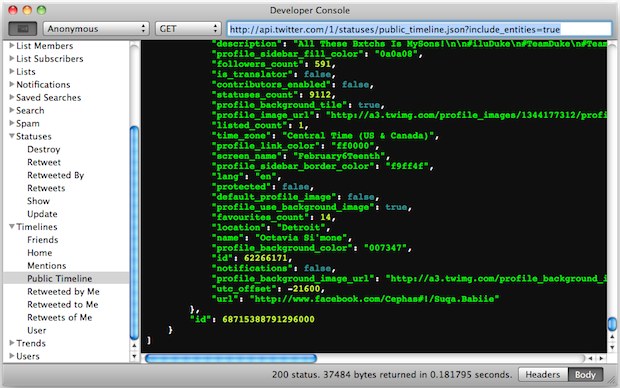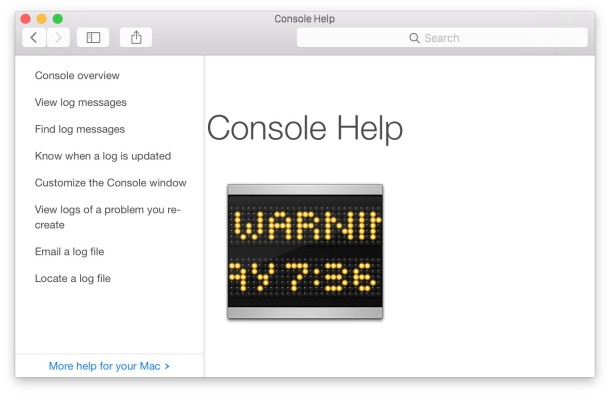Deciphering Mac OS X Crash Logs

Mac OS X is wonderfully stable as an operating system, and although most software is written well, not all code is created equal. Crashing is just a fact of computing life and it frustrates us all, so it’s helpful to be able to pinpoint the cause of the problem. While the causes of some crashes are obvious, others are not, and this is when reading the Mac OS X crash logs can be so useful.
First off, you’ll want to launch Console, located in /Applications/Utilities/
You’ll now see a ton of Console log options for systems, apps, and much more. Much of this will be overwhelming, but OS X provides a little helper to get you started:
- Open the HELP menu in the top of the app menu
- Choose “Console Help” to unveil the help files related to the app, this is a good place to get started if you’re totally new to Console and the interpretation of console logs and messages

Console, as described by the Help files, is explained as follows by Apple:
“As your computer performs tasks, log messages are sent back and forth between apps and parts of the system. These log messages may deal with system events, dialog text, errors, status, and other communications. Records of these log messages are stored on your computer in the log database or in log files. If a problem occurs, you may find details about the cause of the problem by viewing these files.
User diagnostic reports and log messages are from apps used by the current user. System diagnostic reports and log messages are from operating system components that affect all users.”
Now that you have familiarized yourself with the basics, you can navigate the side menu of logs as shown in the screenshot below, expanding ~/Library/Logs and CrashReporter.
CrashReporter is where things can really start to get interesting, because each time an app crashes or a problem is encountered in OS X or a Mac app, it is logged into CrashReporter, helping to discover what and why a problem occurred. You’ve almost certainly seen the Crash Reporter dialog boxes unless you disabled them, this is where all that data goes.
CrashReporter can be fairly advanced and get deeply technical fast. Once you’re in CrashReporter and you feel like digging into some further details, check out this helpful tutorial from MacFixIt on deciphering the logs:

You won’t become an expert overnight, but it’s a good place to begin to understand what all of this means.

